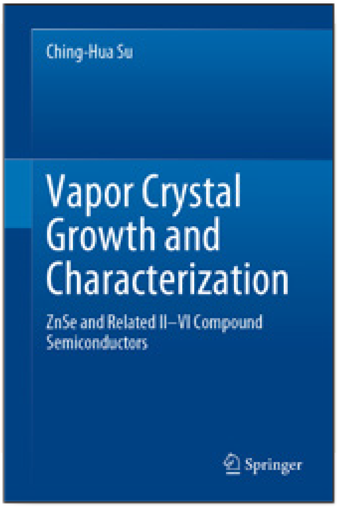
This book focuses on the crystal growth of II–VI compound semiconductors by the vapor-transport method in sealed quartz ampules. Although confined to just a few II–VI compounds related to ZnSe, its topics are general and applicable to many crystal-growth processes.
The book is divided into eight self-contained chapters that can be read independently. Chapter 1 introduces and explains the properties of the compounds discussed, including ZnSe, ZnS, ZnTe, CdS, and CdTe. Their applications include light-emitting diodes and laser diodes in the blue and ultraviolet spectral regions. The advantages of vapor crystal growth are discussed, including its ability to produce crystals at temperatures below the compound's melting point, with controlled stoichiometry, and with high purity.
This crystal-growth process consists of the creation of vapor at the source material (sublimation), transport of species to the crystal-growth zone, and their condensation to form the crystal (chapters 2 and 3). Sublimation is controlled by the vapor pressures of the individual elements in the compound. The thermodynamics governing the partial pressures as functions of temperature are described. The transport of elements is driven by diffusion because of concentration gradients and convection due to differences in temperatures along the tube length.
The practical steps to implementing this crystal-growth method include treating the silica tube to minimize the release of oxygen and water vapor, considering the advantages and disadvantages of horizontal and vertical configurations, and setting up an appropriate temperature profile (chapter 4). Techniques to evaluate the crystals are considered in chapter 5. The crystals are optically examined to determine their size, shape, and morphology. Crystal surface kinetics can be applied to explain the detailed surface structure.
Methods of characterizing the crystalline structure, extended defects, compound stoichiometry, and concentrations of impurities in the crystals are explained in chapter 6. Measuring the crystal's charge-transport properties and the thermal properties before and after post-growth thermal annealing provides further insights into their fundamental properties (chapter 7). Modeling and simulation with mass and energy balances are used to estimate the spatial distributions of species, fluid velocities, and temperature (chapter 8). These can be helpful for understanding the properties of crystals.
The book's text is clearly written, well organized, and easily understood. It is abundantly illustrated with informative graphs, schematics, and photographs. The technology described is well established; only 12 of the 329 references are more recent than 2010. Still, this is a useful book, as it draws together much information into a single source. This is a valuable resource for researchers involved in, and interested in, understanding and improving any type of crystal growth.



